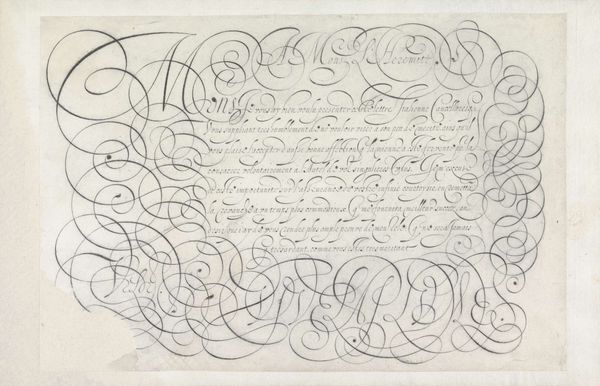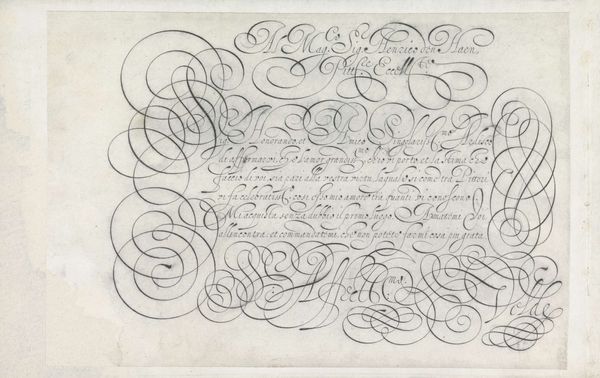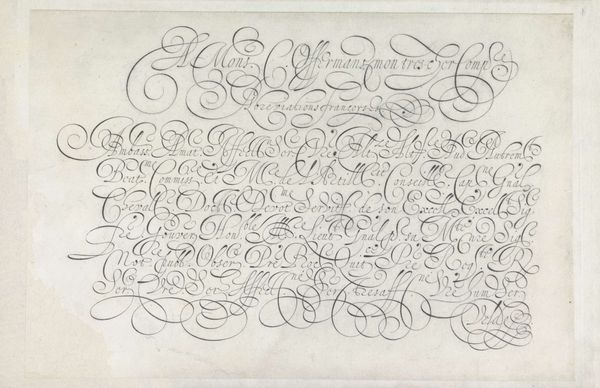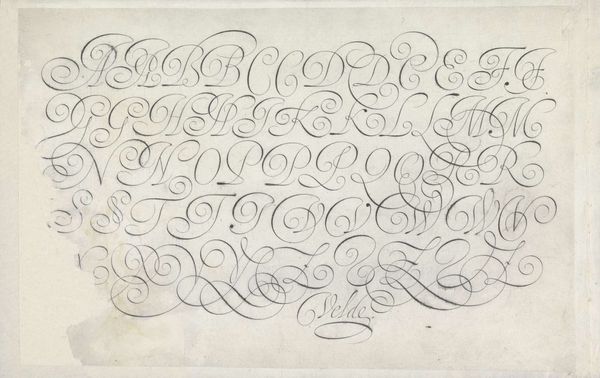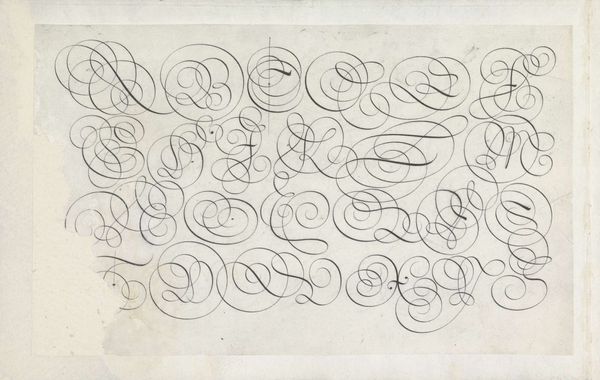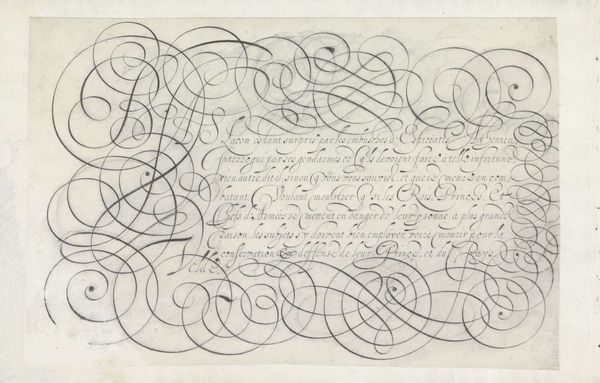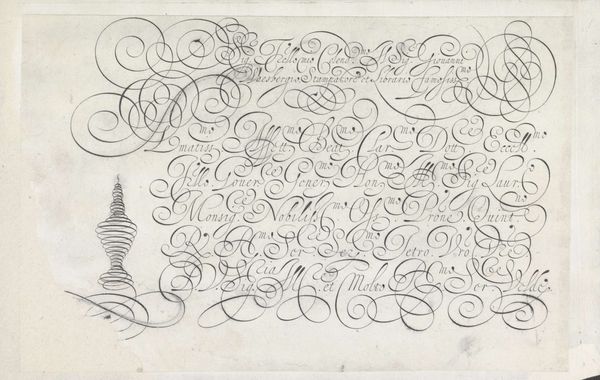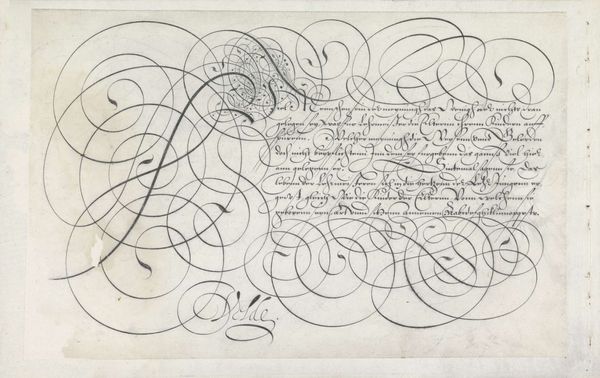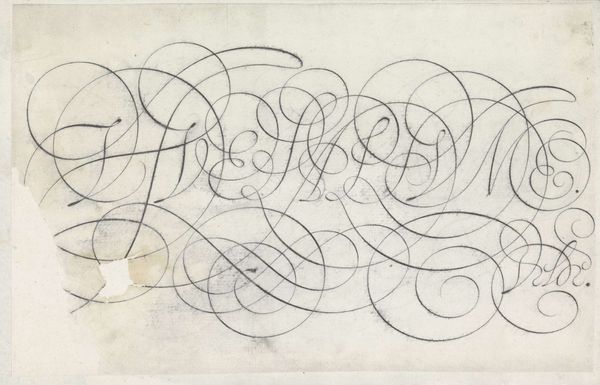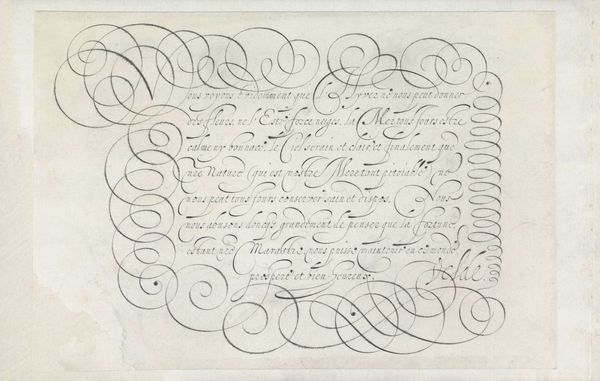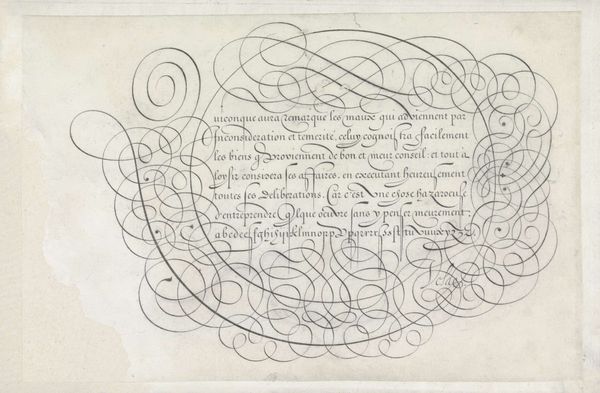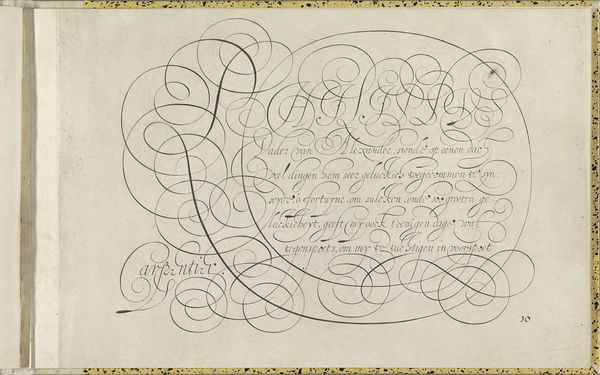
drawing, paper, ink, pen
#
drawing
#
paper
#
ink
#
pen
#
calligraphy
Dimensions: height 192 mm, width 295 mm
Copyright: Rijks Museum: Open Domain
Jan van de Velde the first created this example of penmanship with pen and ink in the early 17th century. The artwork contains ornate lettering and elaborate flourishes, typical of the Baroque period’s emphasis on ornamentation and skill. During the 17th century, the Dutch Republic experienced significant economic and cultural growth. Calligraphy was not merely a functional skill; it reflected the nation's burgeoning merchant class and sophisticated urban culture. The development of schools for calligraphy can be seen in relation to an increasingly literate society. This print acted as a kind of advertisement that showcased the calligrapher's skills and the benefits of the education that he offered. Calligraphy manuals and model books became essential tools for instructing students, standardizing styles, and disseminating knowledge across the region. In order to gain a deeper understanding of this artwork, one might look at archives of the educational institutions of the time. Examining the work of Van de Velde in relation to the development of Dutch culture might reveal much about the social role of art.
Comments
No comments
Be the first to comment and join the conversation on the ultimate creative platform.
